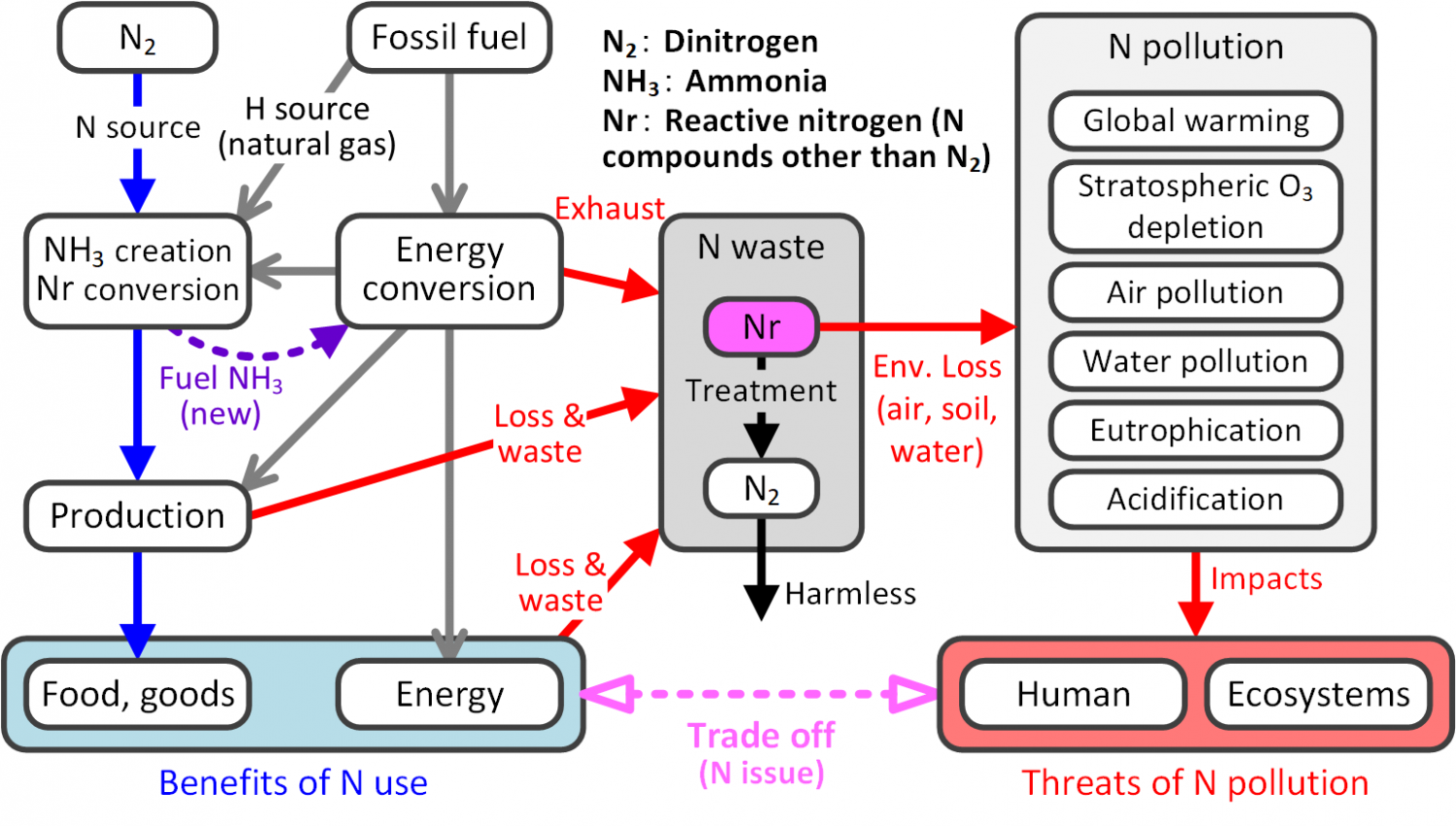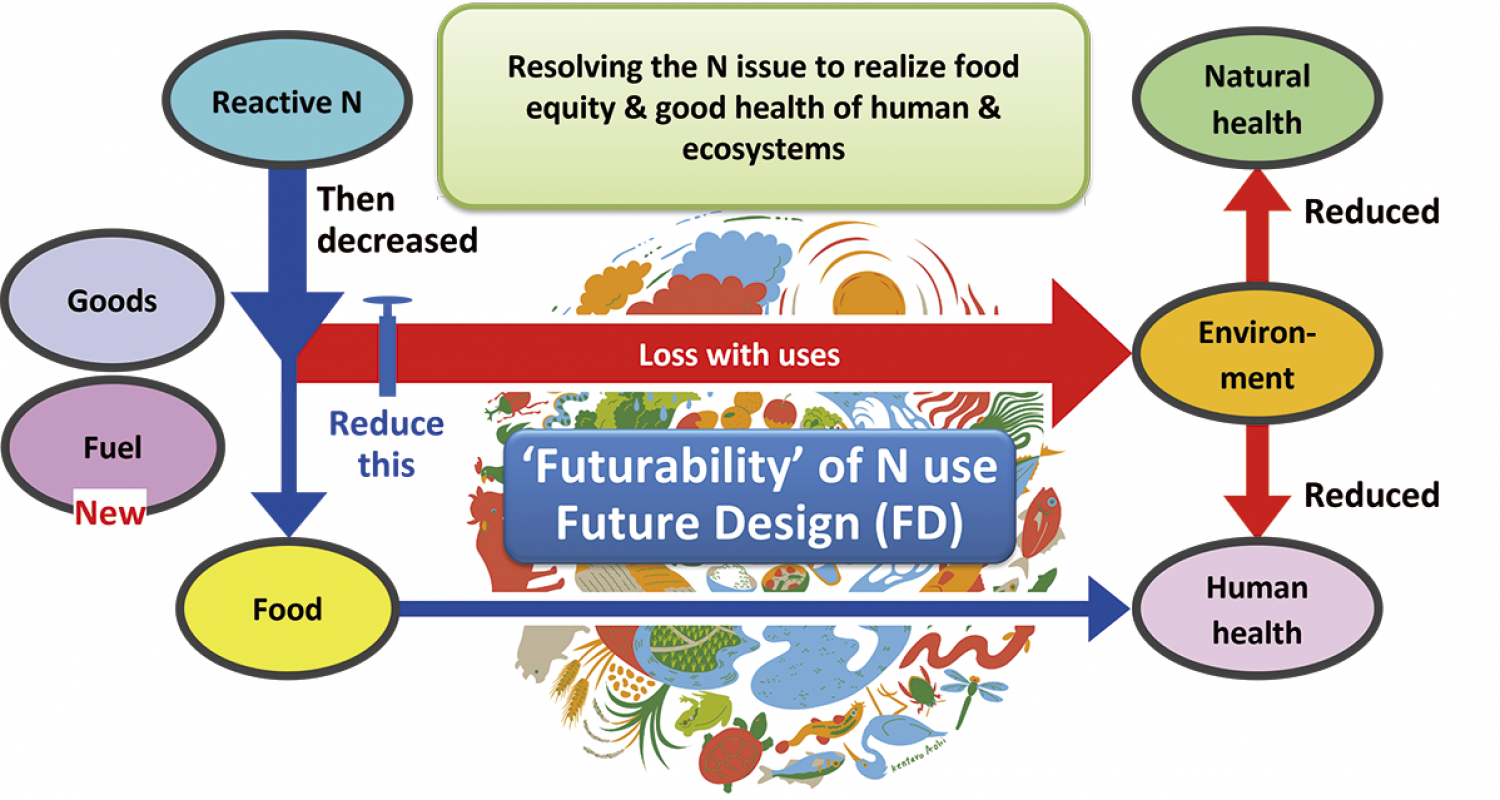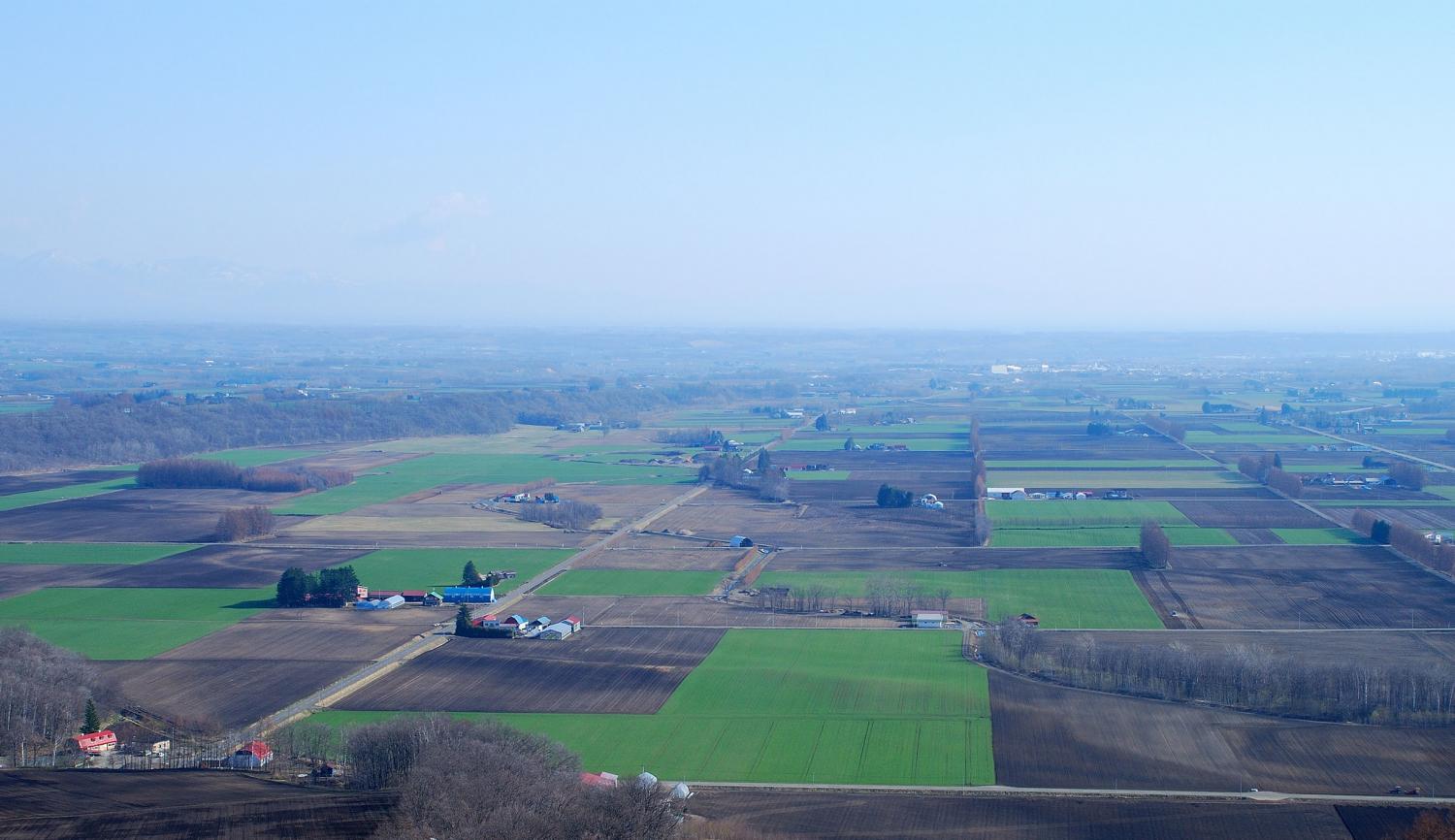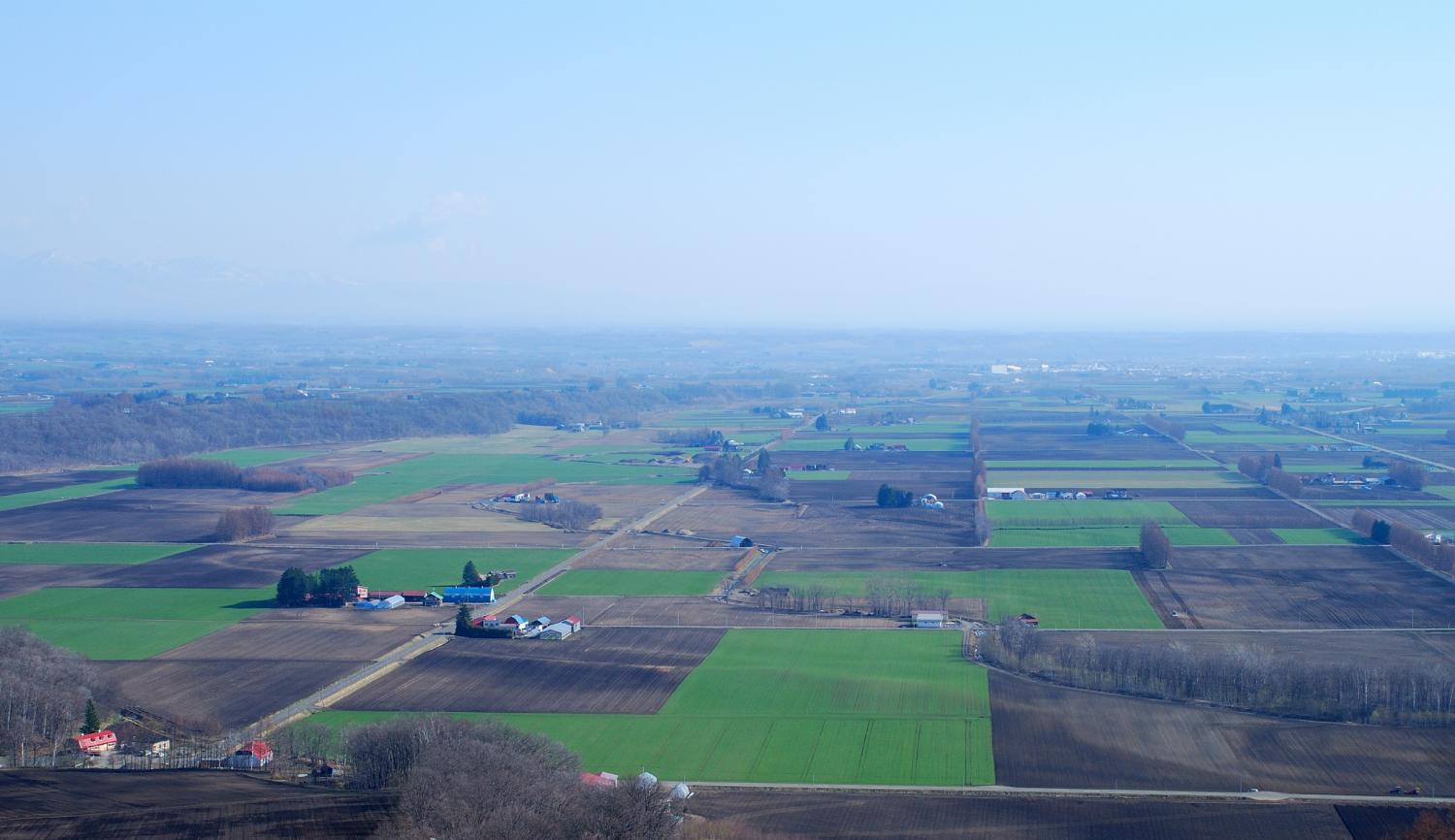
Research Program
Co-creation of the Earth-human System Program
Sustai-N-able (SusN) Project
- Related links
Towards Sustainable Nitrogen Use Connecting Human Society and Nature
Abstract
Nitrogen provides great benefits to humankind as a fertilizer, industrial material and fuel. However, our use of nitrogen unintentionally causes nitrogen pollution and threatens the health of humans and nature. In this project, we will elucidate the dynamics of nitrogen, of which much remains unknown; quantify the environmental burden and impact of nitrogen use; evaluate its benefits and threats and the effects of countermeasures and behavior change; and design the future to realize sustainable nitrogen use.
Nitrogen is an essential element for creating proteins, nucleobases, and other biomolecules. Although nitrogen is ubiquitous, with 78% of the earth’s atmosphere being nitrogen gas (N2), most living organisms, including humans, do not have access to stable N2 and require a form of nitrogen other than N2 (reactive nitrogen, Nr). Our diet is also a means of obtaining nitrogen in the form of protein. To get more food from limited land, we need Nr as fertilizer, and ammonia synthesis technology (Haber-Bosch process), developed in the early 20th century, made it possible to obtain as much Nr as desired.
Synthesized Nr has been used as an industrial raw material as well as a fertilizer, providing a great benefit to mankind. On the other hand, much of the Nr used by humans is discharged into the environment along with its reactive properties. This is especially due to the low nitrogen use efficiency (NUE) of the food system. In addition to the low NUE of food production, there are consumption challenges such as food loss and a preference for livestock products with relatively low NUE. Combustion of fossil fuels and others is another source of Nr emissions.
As a result of Nr emissions into the environment, various forms of nitrogen pollution such as global warming, stratospheric ozone depletion, air pollution, water pollution, eutrophication, and acidification have occurred, causing damage to human and natural health. The trade-off between the benefits of nitrogen use with the threat of nitrogen pollution is called the “nitrogen issue” (Figure 1). To ensure that our future possibilities are sound, we conduct this research to gain integrated knowledge that will lead to solutions to the nitrogen issue and sustainable nitrogen use for future generations.
Results
What we know so far
In fiscal 2023, FR1, we published analyses and reviews on the nitrogen cycle in natural and human societies. We also conducted numerous outreach activities using leaflets (Figure 3) created to promote awareness of the nitrogen issue, actively supporting nitrogen management activities both domestically and internationally.
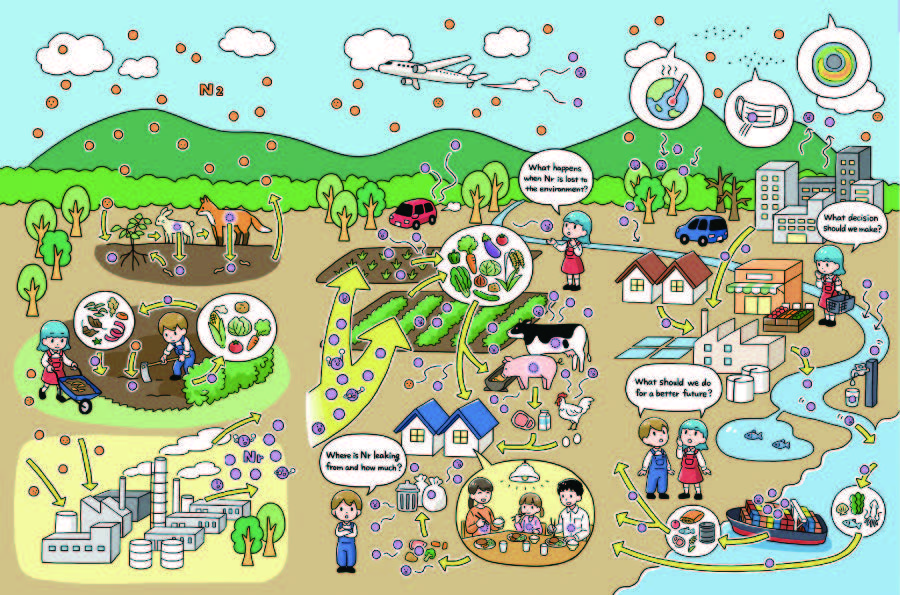 Figure 3 Illustration of the nitrogen issue (drawing: NAKABAYASHI Madoka)
Figure 3 Illustration of the nitrogen issue (drawing: NAKABAYASHI Madoka)
Noteworthy items
As the director of the International Nitrogen Initiative (INI) East Asia Center, the project leader contributed to organizing the 9th International Nitrogen Conference (New Delhi, February 2023), which was hosted by INI. Furthermore, at the request of the Ministry of the Environment, Japan, two members of our project participated in the fourth and fifth meetings of the Working Group on Nitrogen (WGN) established by the Global Partnership on Nutrient Management (GPNM) of the United Nations Environment Programme (UNEP), contributing as an expert to facilitating international nitrogen management. As a result of these activities, our institute also became involved in GPNM. Some members have also contributed to the “National Action Plan for Sustainable Nitrogen Management,” which is prepared by the Ministry of the Environment in collaboration with other ministries of the government of Japan.
News
-
{{ data.disp_date }}
{{ data.content }}
Member
Project Leader
Kentaro Hayashi
Professor, RIHN
Researchers at RIHN
SAIKI Makoto Researcher
ARAI Hirotsugu Researcher
Ayako Kimura Research Associate
Main Members
KOBA Keisuke Kyoto University
MATSUBAE Kazuyo Tohoku University
KURIYAMA Koichi Kyoto University
Evaluation by an external evaluation committee
Research schedule
| 2021 | 2022 | 2023 | 2024 | 2025 | 2026 | 2027 |
|---|---|---|---|---|---|---|
| FS | PR | FR1 | FR2 | FR3 | FR4 | FR5 |
